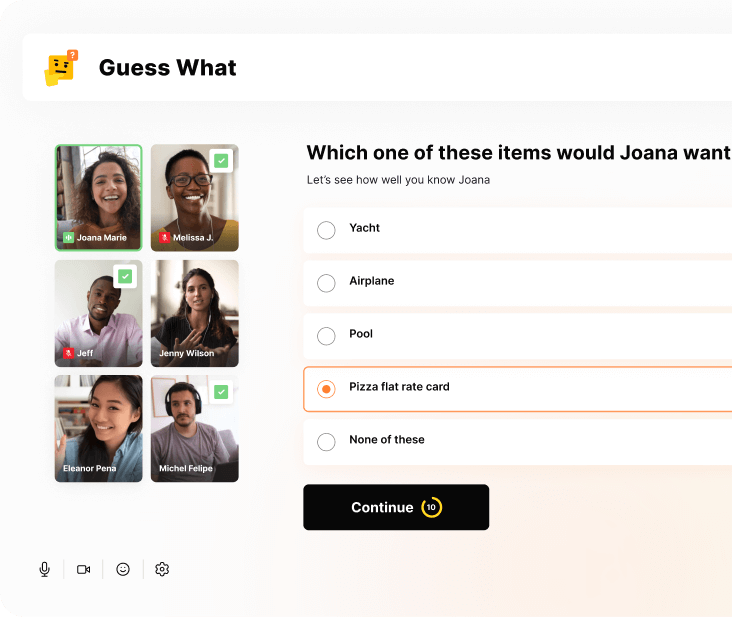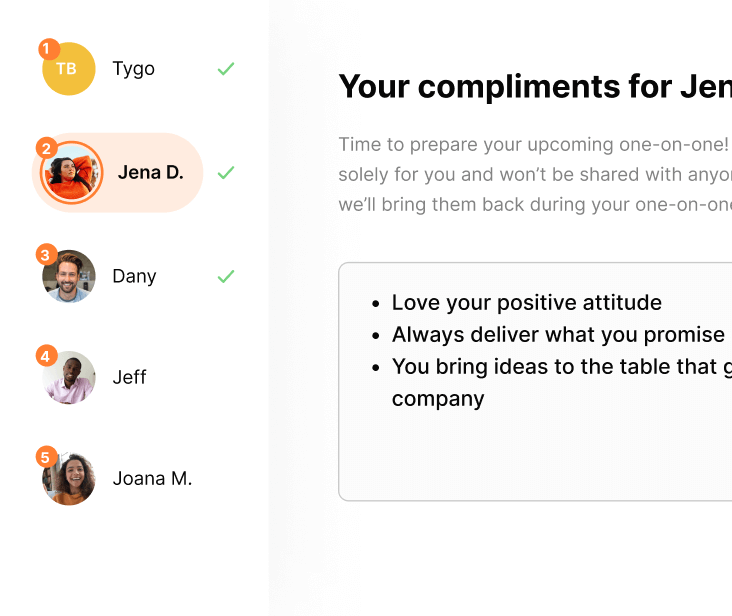Back to Blog
Why employee engagement contests are a BAD idea
You probably landed here Googling for ideas to improve employee engagement.
And on Google, blog after blog tells us that contests are GREAT for improving engagement. But are they?
Considering the title of this piece, you won’t be surprised to hear that we don’t think contests are worth your time.
Here’s why.
More from our series on employee engagement:
- Employee engagement statistics you have to know in 2022.
- The best free online team building activities
- How to make remote employees feel connected
Contests incentivize short-term thinking instead of building engagement from the ground up
While they’re fun, contests don’t get to the bottom of why your team is feeling disengaged. If you’re looking for lasting improvement instead of quick bumps of fun, we suggest you start with this research from Gallup.
The leading organization for engagement research lists the following five factors as the drivers of employee engagement:
- Purpose: Employees feel that their work matters and understand how it contributes to the company’s mission.
- Development: Employees feel they’re learning new things and moving their careers in the right direction.
- A caring manager: Employees have a manager who takes responsibility for their team’s happiness as much as their performance.
- Ongoing conversations: Employees have the opportunity to communicate openly without fearing consequences.
- Focus on strengths: Employees can do what they’re good at.
Here’s the kicker: Gallup reports that “the manager or team leader alone accounts for 70% of the variance in team engagement”.
This means that the team engagement scores are, for the most part, a reflection of how well a manager provides their team with and improves the above factors.
Woah, hold up. Are we saying that poor employee engagement is the result of poor management?
That’s right. Better employee engagement starts with leadership.
Related reading: Our favorite ways of doing team building online.
Share fun facts and bond with a team quiz
Have your participants choose from a list of questions they’d like their coworkers to answer about them, before watching as they guess the right answer.
01. Yes
share-fun-facts-and-bond-with-a-team-quiz

Run a guided recognition activity
Have your participants choose from a list of questions they’d like their coworkers to answer about them, before watching as they guess the right answer.
01. Yes
run-a-guided-recognition-activity

Organize a virtual cooking class
Hire a professional chef to help your team cook a delicious lunch or dinner. May be difficult for co-workers with families. To find providers and get tips, read our blog about virtual cooking classes.
02. No
organize-a-virtual-cooking-class

Hire a stand-up comedian
Have your participants choose from a list of questions they’d like their coworkers to answer about them, before watching as they guess the right answer.
02. No
hire-a-stand-up-comedian

No items found
No items found
Table of contents
You probably landed here Googling for ideas to improve employee engagement.
And on Google, blog after blog tells us that contests are GREAT for improving engagement. But are they?
Considering the title of this piece, you won’t be surprised to hear that we don’t think contests are worth your time.
Here’s why.
More from our series on employee engagement:
- Employee engagement statistics you have to know in 2022.
- The best free online team building activities
- How to make remote employees feel connected
Contests incentivize short-term thinking instead of building engagement from the ground up
While they’re fun, contests don’t get to the bottom of why your team is feeling disengaged. If you’re looking for lasting improvement instead of quick bumps of fun, we suggest you start with this research from Gallup.
The leading organization for engagement research lists the following five factors as the drivers of employee engagement:
- Purpose: Employees feel that their work matters and understand how it contributes to the company’s mission.
- Development: Employees feel they’re learning new things and moving their careers in the right direction.
- A caring manager: Employees have a manager who takes responsibility for their team’s happiness as much as their performance.
- Ongoing conversations: Employees have the opportunity to communicate openly without fearing consequences.
- Focus on strengths: Employees can do what they’re good at.
Here’s the kicker: Gallup reports that “the manager or team leader alone accounts for 70% of the variance in team engagement”.
This means that the team engagement scores are, for the most part, a reflection of how well a manager provides their team with and improves the above factors.
Woah, hold up. Are we saying that poor employee engagement is the result of poor management?
That’s right. Better employee engagement starts with leadership.
Related reading: Our favorite ways of doing team building online.
Contests put the responsibility on your team
We’ll repeat this finding from Gallup because it’s mind-blowing:
“[T]he manager or team leader alone accounts for 70% of the variance in team engagement.”
Bad manager = lousy engagement.
Great manager = great engagement.
When we give teams a contest to spur engagement, we put the responsibility on them. “Go on, engage with each other!” right? The hard truth: The last thing disengaged teams need is a contest so HR and managers can feel better about themselves.
It’s the responsibility of managers to ask themselves, “how can I help my team feel more engaged?”. In the following section, we list two other things they can do to get there.
No contests! Alternative ideas for employee engagement
So, how DO you start improving engagement? If we had to give you a simple plan, it would look like this:
1. Set up measurement tools to track your progress
There are many ways of measuring employee engagement. Gomada’s pulse surveys and activity metrics allow you to see and feel how your team is doing. TinyPulse and Officevibe are also great options. Whatever you do, get regular feedback instead of annual surveys.
2. Talk to your team members individually
Have you ever asked people how you could make their jobs more engaging? You can also ask direct questions about the five drivers of engagement, such as
- Do you feel like your work matters? Do you understand how it supports our team’s goal?
- What have you learned in the last six months? Are you learning things you’re excited about?
- Does your manager care about your well-being? (this one you’ll need to ask anonymously)
- When you have criticism or an opposite opinion, do you have a space to share it?
- Does your work focus on your strengths?
You can also wrap these questions into a longer engagement survey (read more here) to get an initial assessment of the situation or to receive anonymous feedback.
3. Use tools (and maybe contests) to amplify what’s working
Even the best tools can’t fix your engagement problem if they’re rooted deeply in Gallup’s factors.
But if you’re on an excellent path to improving and want to do more, software tools can help. Below are some of the top-reviewed employee engagement tools on the market:
If you want to learn more about tools, read our review of employee engagement apps and employee engagement solutions (which takes a broader approach than just apps).
If you’re still reading this, you’re on the right path
The first step to improving employee engagement is realizing that engagement matters. Since you’re still reading, you’re right on track.
Keep up the great work, friend 💛.
Subscribe to get our latest updates
Subscribe to get our latest updates






